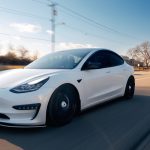Tesla has initiated a new phase of testing for its Robotaxi service, aiming to expand its operational area around Austin, Texas. This activity comes as observers noticed Tesla validation vehicles operating well beyond the current 80-square-mile service area, specifically in Bee Cave, a suburb approximately 15 miles west of Austin’s established Robotaxi perimeter. As the company eyes a potential expansion to encompass over 150 square miles, anticipation grows about how this could reshape ride-hailing access in the region. Tesla’s approach to these tests involves both technical evaluations and close attention to regulatory requirements, with competition and safety serving as critical factors in the expansion process.
When Tesla launched Robotaxi in June, its initial coverage was limited but quickly doubled twice, reflecting an aggressive approach compared to earlier, more incremental advancements. Waymo, a key rival, also maintains expansion efforts, fostering a parallel race for urban autonomous ride-hailing presence. Unlike some prior expansions that responded more slowly to urban planning and public perception concerns, Tesla’s recent moves show an accelerated development timeline and a larger geographical ambition.
How Does Tesla Implement Geofence Extensions?
Tesla employs a combination of controlled testing and real-time data analysis before extending the Robotaxi geofence. The current testing sites, such as Bee Cave, act as trial grounds to assess vehicle performance, passenger experience, and safety protocols outside established zones. These evaluations inform future operational boundaries, ensuring that uncharted areas can meet the service’s standards.
What Role Does Competition Play in Expansion?
The rivalry with Waymo contributes to Tesla’s accelerated expansion strategy around Austin and the Bay Area. Both brands vie for leadership in autonomous ride-hailing, prompting faster deployment and more frequent updates to their fleets and service zones. As both companies escalate their activities, the pace of innovation has intensified, impacting regulatory engagement and public expectations.
How Is Tesla Maintaining Safety During Growth?
Tesla reiterates that safety remains its top priority, even as it broadens the Robotaxi service area and vehicle count. CEO Elon Musk addressed concerns by stating,
“We are being very cautious. We do not want to take any chances, so we are going to go cautiously.”
He further added,
“But the service areas and the number of vehicles in operation will increase at a hyper-exponential rate.”
This underscores the company’s measured approach to scaling, balancing operational ambitions against stringent safety standards.
This latest push shows Tesla’s determination to expand Robotaxi’s reach and build on its competitive edge, while drawing from lessons observed in previous stages of its deployment. The focus on exponential growth, combined with an insistence on caution and data-driven strategy, suggests that Tesla aims to scale responsibly. Drivers and potential passengers can expect gradual increases in coverage as testing verifies vehicle performance in broader and more diverse environments, minimizing risks and maximizing service reliability.
- Tesla tests Robotaxi service beyond Austin’s current geofence boundaries.
- Waymo and Tesla both quicken expansion in autonomous ride-hailing markets.
- Safety and cautious growth anchor Tesla’s expansion, says Elon Musk.










